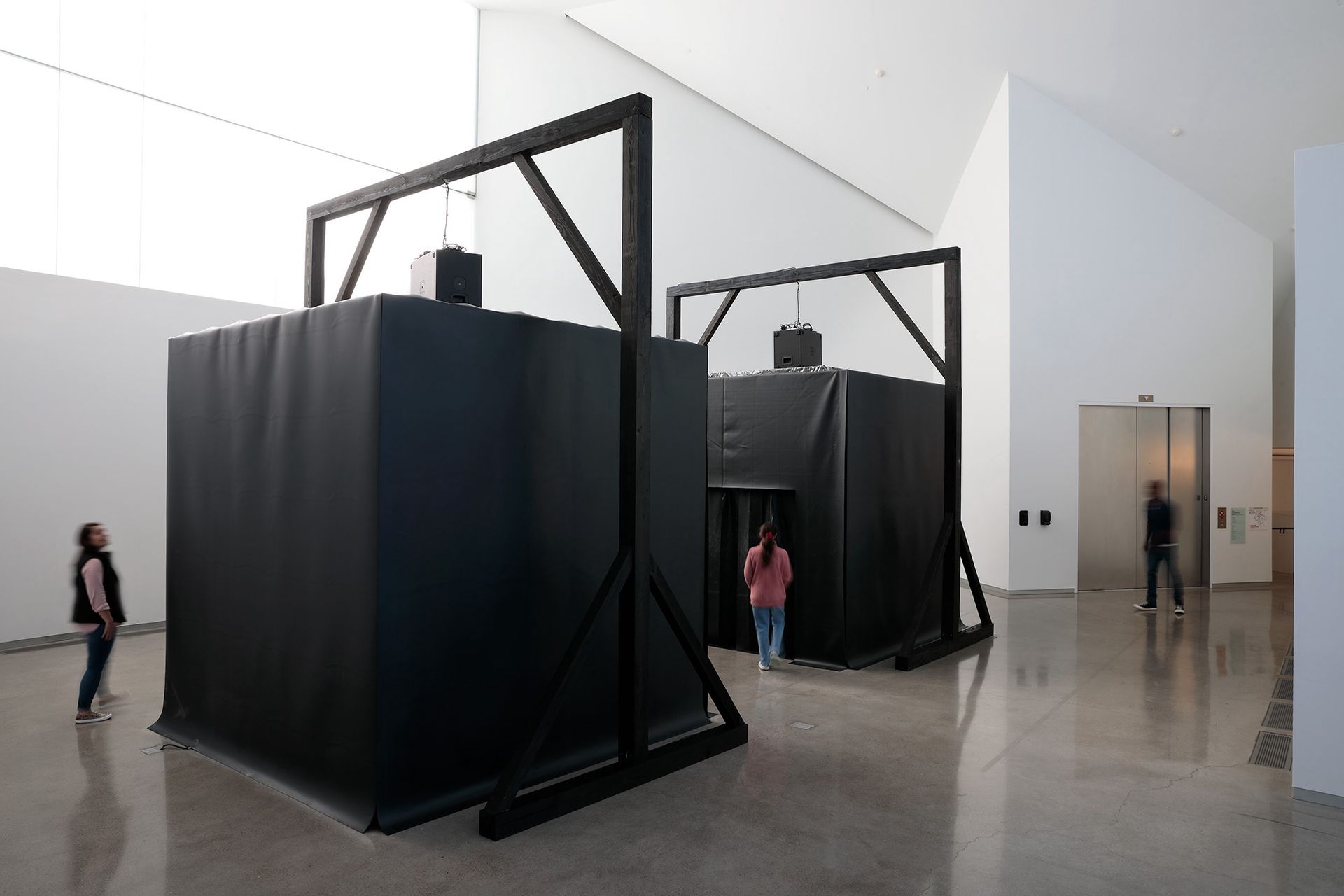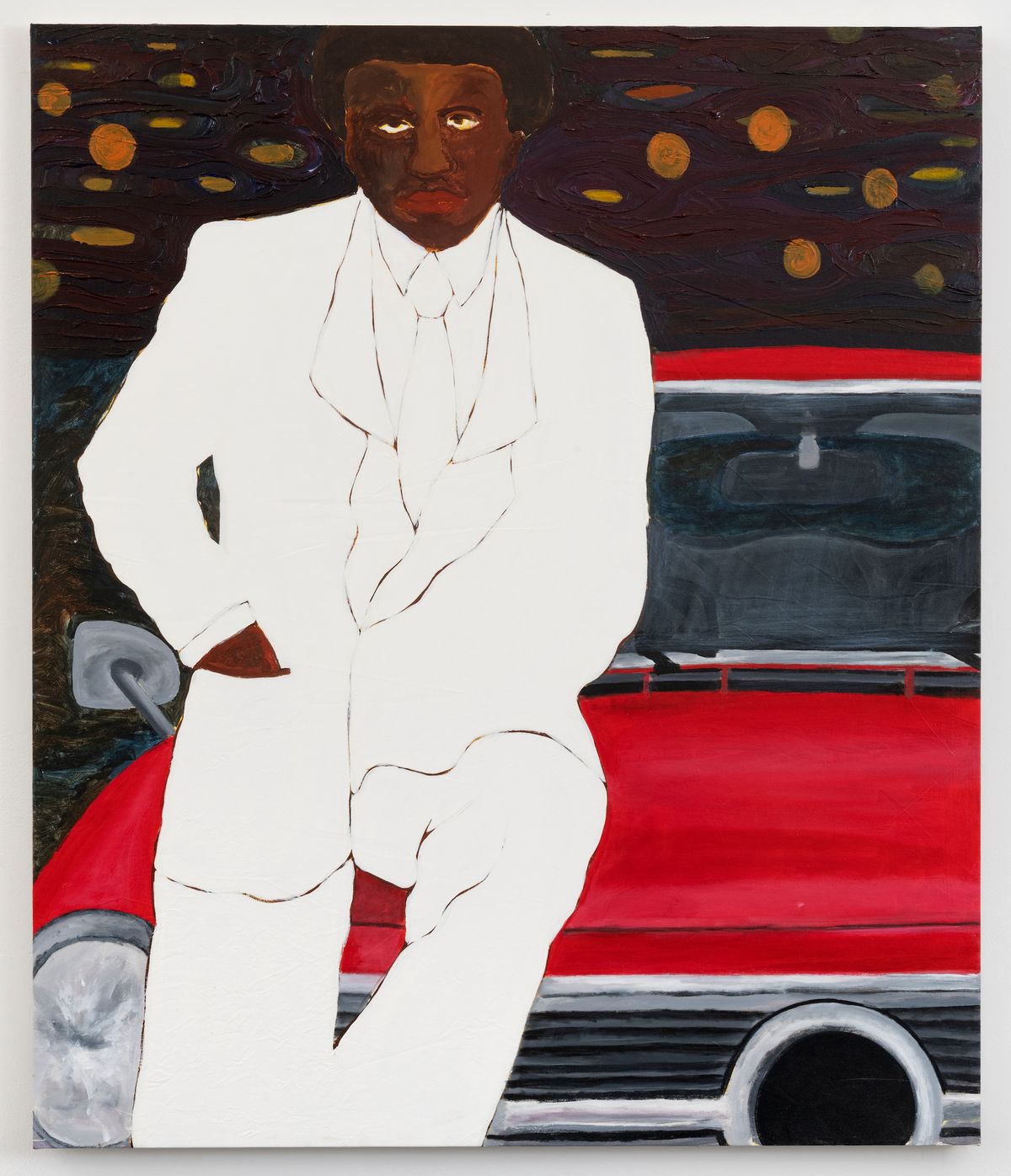As the Institute for Contemporary Art at Virginia Commonwealth University (ICA at VCU) enters its fifth year, it is offering a platform to underrepresented perspectives articulated in a range of media. Like many leaders at cultural and educational institutions in the US South working through legacies of historical trauma, ICA director Dominic Willsdon is exploring how to articulate a break from the past without disavowing history. The museum’s current and upcoming programming makes a compelling case for how institutions can look back while moving forward.
Set it Off by New York-based composer and multidisciplinary artist Jeremy Toussaint-Baptiste is an immersive sound exhibition that uses frequencies that register just below human audibility. The exhibition, which is split between the ICA (until 19 June) and the nearby 1708 Gallery (until 12 June), continues Toussaint-Baptiste’s research into what he calls “hyper-audible” object environments, using a car’s audio system as the most recognisable transmitter of bass. He composes his work like a musical arrangement to analyse how bass affects cities and their residents. The artist works in a black minimal aesthetic intended to symbolise the shared Black experience, creating bass frequencies and vibrations that function as sonic representations of Minimalism. Set it Off features a new iteration of his work Get Low, which references Kazimir Malevich’s 1915 painting Black Square.

Detail view of Jeremy Toussaint-Baptiste, Get Low (The Fall/The Drop) (2021) at the Institute for Contemporary Art at VCU Photo by David Hale
Later this month, the ICA opens an exhibition featuring two Latin American artists who address injustice through figuration. Aquí Me Quedo/Here I Stay (28 January-19 June), guest curated by Miguel A. López (TEOR/ éTica), stages a dialogue between the Costa Rican artist Sila Chanto (1969-2015) and the Dominican artist Belkis Ramírez (1957-2019). Both worked with printmaking, specifically large-scale woodcuts, to critique the misogynistic violence and masculine control of the patriarchal societies in which they both lived. Chanto’s printmaking techniques incorporated supernatural imagery that addressed marginalisation and belonging, as well as the fragile nature of life. Ramírez’s prints typically combine figuration and abstract designs to explore the vulnerability of the body, gender stereotypes and sexual harassment of women.
A very different approach to figuration is at the root of Ghanaian artist Gideon Appah’s first solo institutional exhibition, Forgotten, Nudes, Landscapes, which opens at the ICA on 11 February with a mix of newly commissioned works and pieces dating back to 2019. Appah’s paintings draw upon Ghana’s national archive of images of popular culture, particularly those from the 1960s and 1970s, reflecting a sense of national memory and pride during those first decades after the country gained independence. The artist applies acrylic paint thickly amid collaged layers of materials such as photographs, posters and prints. The vibrancy of the scenes he creates imbue his subjects with a distinctive character. While his work is undoubtably figurative, through loose brushstrokes and seamless blending he creates areas of terrific abstract strength.
Working between abstraction and figuration to present marginalised perspectives, the ICA’s slate of current and upcoming exhibitions—from Toussaint-Baptiste’s minimalistic take on audibility in urban spaces, to Chanto and Ramírez’s courageous images of injustice, and Appah’s renderings of his country’s history—underlines imperative issues.


